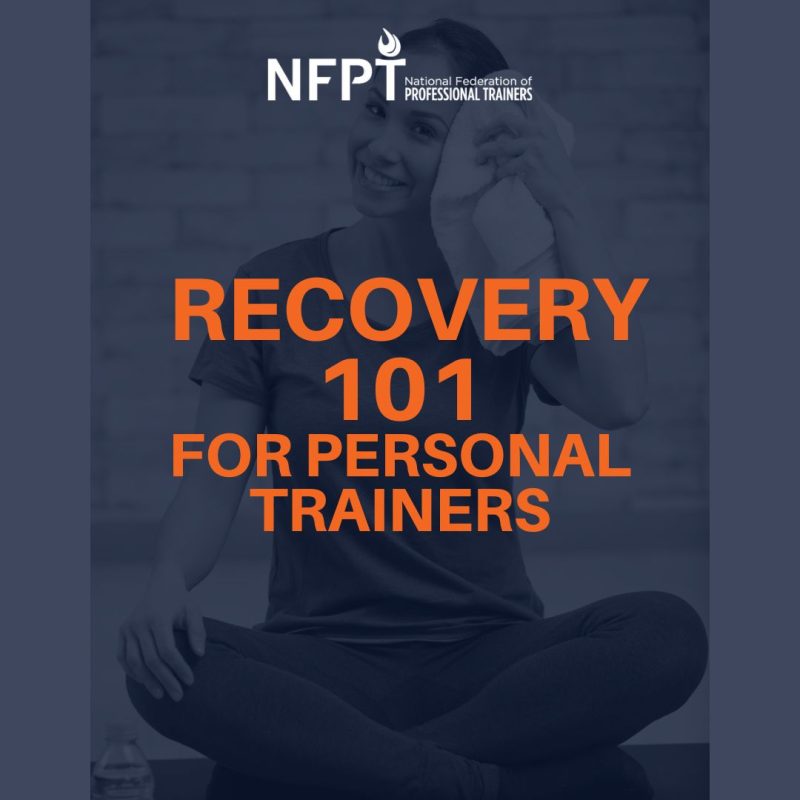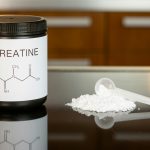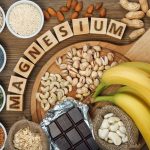
Effective recovery strategies can significantly impact your personal training clients’ progress and overall satisfaction with their training program. Your clients rely on you as a coach to propel them towards their fitness goals. Often, they don’t realize that they also depend on you to minimize their risk of injury and promote overall well-being in their relationship with health and fitness.
“Recovery from exercise refers to the time period between the end of a bout of exercise and the subsequent return to a resting or recovered state. It also refers to specific physiological processes or states occurring after exercise that are distinct from the physiology of either the exercising or the resting states.”
~Romero, Minson, & Halliwill corresponding 2017
Continuous periods of challenging training without adequate recovery can decrease physical and psychological well-being, leading to non-functional overreaching. or overtraining syndrome (Bell et al., 2023).
In this comprehensive guide, we will delve into the science behind exercise recovery and equip you with valuable knowledge to assist your clients in optimizing their recovery processes.
This article will cover the following subjects on recovery that are within the personal trainer’s scope. Note that there are many more areas to learn about, such as sleep, nutrition, and even herbal medicine.
- Active Recovery
- Mental Recovery and Stress Management
- Passive Recovery
What takes place post-exercise necessitating recovery?
What happens during recovery after exercise?
The body is adapting to the stress associated with exercise, movement, and/or activity post-exercise. It replenishes muscle glycogen energy stores (here’s where adequate nutritional intake becomes paramount), and repairs the damaged skeletal muscle tissue The recovery time allows the body to utilize the growth hormones that were released during the session for the repair.
Active Recovery
What is active recovery? Active recovery is any activity performed at a low intensity following training to reduce inflammation, promote muscle tissue healing, reduce central nervous system fatigue, and more.
Most of the research on active recovery investigates submaximal cycling or deloading strategies to measure the effects on recovery after various training conditions (Anderson et al., 2008; ). This limited research on active recovery leaves a lot of questions about other forms of active recovery.
However, there is abundant research on passive recovery modalities such as water immersion, compression, massage, electrical stimulation, etc. Here are some examples of what active recovery is:
- Mobility and flexibility training (Calleja-Gonzales et al., 2019)
- Submaximal recreational activities such as walking, yoga, or cycling (Peake, et al., 2017)
- Light sessions or a deloading phase (Bell et al., 2023)
What are the effects of active recovery?
Compared to remaining sedentary post-exercise, active recovery promotes cardiac output, improves muscle blood flow, and reduces blood pressure (Peake, et al., 2017). This strategy can effectively reduce muscle soreness and improve overall recovery. Active recovery also mitigates physiological and psychological fatigue, reducing the likelihood of injury and mental burnout (Bell et al., 2023).
A 2018 systematic review found that compared to common recovery strategies, active recovery induced a significant decrease in delayed-onset-muscle-soreness (Dupuy et al., 2018).
How can active recovery be implemented?
Active recovery can be implemented easily in three different ways:
- Micro doses after a normal-intensity workout for 5-15 minutes (cool-downs)
- Light intensity cardio
- Dynamic stretching
- Light load resistance training focusing on corrective exercises
- Replace a workout in the week with a recovery session
- “Prehab,” preventive injuries exercises, or corrective exercises
- Bodyweight exercises at low intensity focusing on form and technique
- Light intensity cardio
- A recovery phase of multiple days or weeks following an intensive training program or competition
- Decreased training volume (30-50% is typically recommended)
- Decreased training load (30-50% is typically recommended)
- A combination of decreased training volume and load
- A combination of numbers two and three from above
“Deloading is a point within the overall training program where training demand was intentionally and systematically reduced. Tapering and deloading were distinguished solely based on their position within the overall training program: the taper takes place before the competition, but the deload could occur at any point within the training program” (Bell et al., 2022).
Why is active recovery significant?
Active recovery is significant because it allows for a programmed time when the average workout intensity is lower to allow for time to decrease soreness, mental fatigue, and central nervous system fatigue. For many, stopping or slowing down a routine can be challenging psychologically. Active recovery offers a legitimate opportunity to exercise with less intensity when training at the usual intensity isn’t productive.
When are some times to consider implementing active recovery? Knowing when to let your body recover from its routine can be confusing. There are several critical times when it may be a good idea to introduce some active recovery:
- When you can’t train normally, such as during travel or after an injury, and need to slow down or prevent deconditioning
- When you are plateauing in progress
- When injuries or nagging pains persist
Encourage your clients to engage in activities like walking, swimming, or cycling on their rest days. Personal trainers should individualize active recovery based on the client’s fitness levels and preferences.
Passive Recovery
There isn’t an agreed-upon definition of “passive recovery,” as it is sometimes called “non-active recovery” (Hoolihan, 2017). The Current Sports Medicine Reports defines passive recovery as “any modality or exercise where the athlete is not performing the work or actively participating” (Cullen et al., 2021). However, other sources define passive recovery as “stillness and inactivity” (Ross, 2015).
This article will use the Current Sports Medicine Report’s definition, as it is a credible, peer-reviewed journal from the American College of Sports Medicine.
A 2021 literature review of 53 studies reviewed the current literature on passive recovery modalities, with findings graded by level of evidence, including (Cullen et al., 2021):
- Compression garments
- Cold water immersion and partial body cryotherapy
- Hyperbaric oxygen
- Vibratory therapies
The literature review summarized findings and made recommendations with graded levels of evidence, with “I” being the highest and “IV” being the lowest.
In summary, the literature review found sufficient evidence for hyperbaric oxygen, compression, and cryotherapy, suggesting a positive effect on recovery “if applied under the right conditions and for the right duration” (Cullen, 2021).
On the contrary, more evidence is needed to justify using electrical stimulation, percussive therapy, and vibratory therapy in athlete recovery (Cullen, 2021).
Percussive Massage
Percussive massage guns, also known as massage percussion devices, have gained popularity as tools to aid exercise recovery in the fitness industry. These devices use rapid, targeted vibrations to stimulate muscle tissue and increase blood flow.
Percussive massage guns may help alleviate muscle soreness, improve flexibility, and reduce muscle tension. By targeting specific muscle groups, these devices can enhance recovery after intense workouts.
To use percussive massage guns effectively, target areas with muscle tightness or soreness. Spend 30 seconds to 2 minutes on each muscle group, moving the device slowly and controlled. Avoid applying excessive pressure, especially on bony areas.
Myofascial Release and Foam Rolling
Myofascial release techniques can be beneficial for exercise recovery. Fascia is a connective tissue that surrounds and runs within muscles, and when it becomes tight or restricted, it can limit movement and contribute to discomfort.
Foam rolling can help release tension in fascia, improve blood flow, and reduce muscle knots. It’s an accessible and cost-effective recovery technique to incorporate into clients’ routines.
Encourage your clients to foam roll major muscle groups for 1-2 minutes per area. Focus on areas with known tension or soreness.
Cryotherapy
Cryotherapy is any therapeutic modality that applies cold to the body. Cold water immersion is a common therapy that reduces pain, inflammation, and metabolites (Cullen, 2021). Before starting cold water immersion, it is crucial to consider medical contraindications. The research uses temperatures between 11°C and 15°C for 11 to 15 minutes for two 5-minute periods.
Electric Stimulation
Electrical stimulation involves placing electrodes on the skin’s surface that run a current through the muscles. Research is lacking on the effects of electrical stimulation on exercise recovery, as it is mainly used in medical physical therapy applications (Cullen, 2021). It is thought that electrical stimulation helps reduce pain, improve blood flow, and repair muscles
CBD Supplementation
Cannabidiol (CBD) is a cannabinoid typically sourced from hemp, a non-psychoactive variation of the cannabis plant. CBD is currently being studied for its potential therapeutic value in reducing the symptoms of acute pain, chronic pain, and inflammatory disorders like arthritis or bursitis.
The use of CBD in sports medicine is nothing new, and is emerging as a consumer go-to for issues like sprains, pulled muscles and spasms. Among athletes, CBD is used in many creative ways not limited to tinctures or concentrates. For example, CBD roll-ons can relieve pain in targeted areas as a natural and localized alternative to non-steroidal anti-inflammatory drugs (NSAIDs), which are known to inhibit the inflammatory process that is actually integral to muscle growth and repair. CBD isolates can also be infused into massage oils to reduce soreness and cramps.
CBD oils and powders can even be used in combination with certain pre-workouts like energy blends and Yohimbe capsules to potentially improve workout performance. While this has yet to be solidly established in scientific literature, correlating anecdotal evidence in the form of consumer reviews both on- and offline strongly supports the use case.
Sleep and Mental Recovery
Sleep
Effective sleep practices are just as essential as a solid exercise routine. All that hard work in the gym will reach its full potential with proper sleep. A 2019 review on the effects of sleep and athletic performance stated that the adverse effects of inadequate sleep range from poor decision-making to decreases in reaction time and strength (Vitale, et al., 2019).
The sleep review listed sleep hygiene tips that can improve sleep:
- Avoid high-intensity exercise right before bed, which may raise cortisol, impairing sleep
- Use the bed for sleep and intimacy, not for other activities such as phone use or other electronics
- Wake up at the same time every morning
- Remove any sources of light, even the power light of an electronic
- Avoid blue light at least two hours before bedtime
- Don’t hit the snooze button. It doesn’t improve sleep quality
Mental Recovery
It has been shown that mindfulness, meditation, and other mental practices decrease stress, which promotes overall recovery (Goldstein et al., 2020). Stress can harm recovery by increasing cortisol levels and hindering the body’s ability to repair and adapt.
Teach stress-reduction techniques such as meditation, mindfulness, and progressive muscle relaxation. Encourage your clients to identify and address sources of stress in their lives to optimize recovery.
Relaxing can be hard for some. Help your clients pinpoint what allows them to relax and encourage them to spend time doing it (even if it’s a few minutes every day). It’s no different than if we’re training clients a few days per week, making incremental gains that build upon themselves over time. In that way, the results of these practices build up over time. It’s called the accumulation effect.
Conclusion
In the world of fitness and personal training, the science of exercise recovery is growing, with its importance becoming clearer each day. As a personal trainer, your expertise in this area can significantly impact your clients’ journey toward achieving their fitness goals while safeguarding their well-being.
By mastering the science of exercise recovery and incorporating a holistic approach into your training programs, you can empower your clients to achieve their fitness goals efficiently, safely, and with greater satisfaction.
Try implementing some aspects of recovery into your clients’ programming today!
References
- Andersson H, Raastad T, Nilsson J, Paulsen G, Garthe I, Kadi F. Neuromuscular fatigue and recovery in elite female soccer: effects of active recovery. Med Sci Sports Exerc. 2008 Feb;40(2):372-80. doi: 10.1249/mss.0b013e31815b8497. PMID: 18202563.
- Bell L, Nolan D, Immonen V, Helms E, Dallamore J, Wolf M, Androulakis Korakakis P. “You can’t shoot another bullet until you’ve reloaded the gun”: Coaches’ perceptions, practices and experiences of deloading in strength and physique sports. Front Sports Act Living. 2022 Dec 21;4:1073223. doi: 10.3389/fspor.2022.1073223. PMID: 36619355; PMCID: PMC9811819.
- Bell L, Strafford BW, Coleman M, Androulakis Korakakis P, Nolan D. Integrating Deloading into Strength and Physique Sports Training Programmes: An International Delphi Consensus Approach. Sports Med Open. 2023 Sep 21;9(1):87. doi: 10.1186/s40798-023-00633-0. PMID: 37730925; PMCID: PMC10511399.
- Calleja-González J, Mielgo-Ayuso J, Ostojic SM, Jones MT, Marques-Jiménez D, Caparros T, Terrados N. Evidence-based post-exercise recovery strategies in rugby: a narrative review. Phys Sportsmed. 2019 May;47(2):137-147. doi: 10.1080/00913847.2018.1541701. Epub 2018 Nov 7. PMID: 30369286.
- Cullen, Michael-Flynn L. MD; Casazza, Gretchen A. PhD; Davis, Brian A. MD. Passive Recovery Strategies after Exercise: A Narrative Literature Review of the Current Evidence. Current Sports Medicine Reports 20(7):p 351-358, July 2021. | DOI: 10.1249/JSR.0000000000000859
- Dupuy O, Douzi W, Theurot D, Bosquet L, Dugué B. An Evidence-Based Approach for Choosing Post-exercise Recovery Techniques to Reduce Markers of Muscle Damage, Soreness, Fatigue, and Inflammation: A Systematic Review With Meta-Analysis. Front Physiol. 2018 Apr 26;9:403. doi: 10.3389/fphys.2018.00403. PMID: 29755363; PMCID: PMC5932411.
- Goldstein E, Topitzes J, Brown RL, Barrett B. Mediational pathways of meditation and exercise on mental health and perceived stress: A randomized controlled trial. J Health Psychol. 2020 Oct;25(12):1816-1830. doi: 10.1177/1359105318772608. Epub 2018 May 7. Erratum in: J Health Psychol. 2020 Oct;25(12):NP1-NP2. PMID: 29733230; PMCID: PMC6367057.
- Hoolihan https://www.ideafit.com/mind-body-recovery/research-and-resources/exercise-recovery-active-vs-nonactive/
- Peake JM, Roberts LA, Figueiredo VC, Egner I, Krog S, Aas SN, Suzuki K, Markworth JF, Coombes JS, Cameron-Smith D, Raastad T. The effects of cold water immersion and active recovery on inflammation and cell stress responses in human skeletal muscle after resistance exercise. J Physiol. 2017 Feb 1;595(3):695-711. doi: 10.1113/JP272881. Epub 2016 Nov 13. PMID: 27704555; PMCID: PMC5285720.
- Ross https://www.acefitness.org/resources/pros/expert-articles/5456/passive-vs-active-recovery-which-is-more-effective/
- Vitale KC, Owens R, Hopkins SR, Malhotra A. Sleep Hygiene for Optimizing Recovery in Athletes: Review and Recommendations. Int J Sports Med. 2019 Aug;40(8):535-543. doi: 10.1055/a-0905-3103. Epub 2019 Jul 9. PMID: 31288293; PMCID: PMC6988893.








